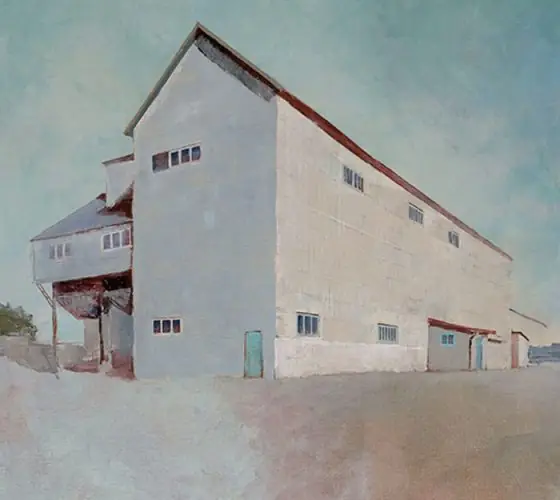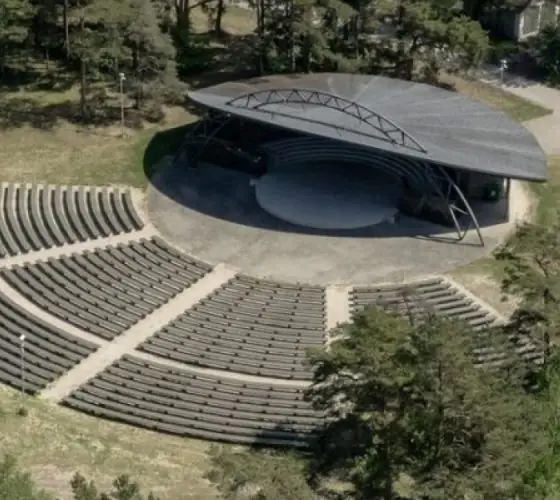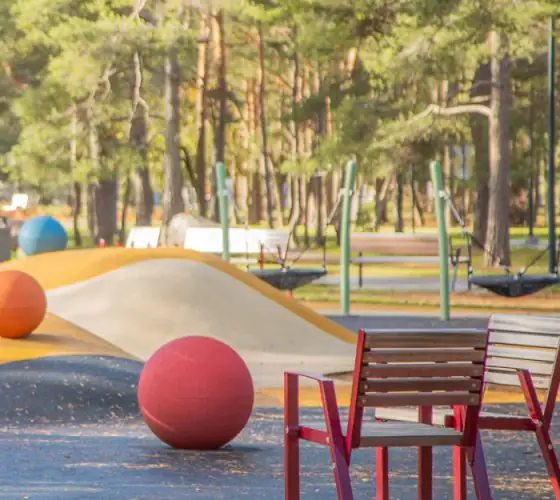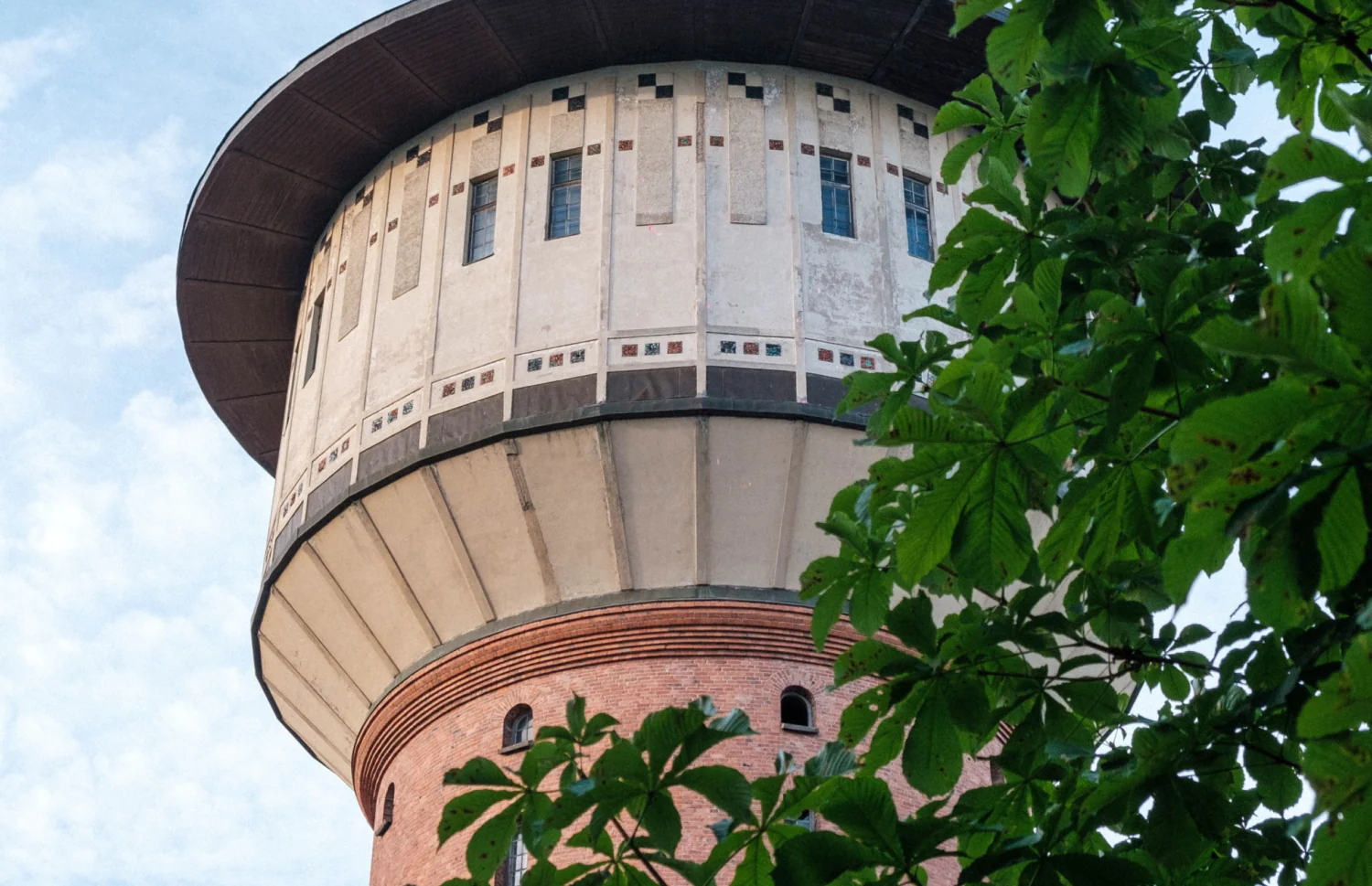
facebook.com/balodistorni
A Brief History of Water Towers
When thinking about the history of industrialization, often the images of cityscapes filled with factories and their mighty chimneys come to mind. Yet the steam engines could not run without one essential player—water. Water towers helped develop local industries, powered the ever-growing train networks and supplied a reliable source of water for the communities that previously faced shortages.
Water towers slowly became associated with a broader notion of progress and modernisation itself. Some of them had become landmarks, such as the Chicago Water Tower: one of the rare if not only surviving examples of a Chicago building before the fire of 1871.
Things slowly started to shift in the second half of the 20th century. Railways no longer needed such vast amounts of water as steam-locomotives were gradually replaced by diesel and electric. Cheap and available electricity allowed pumping water with powerful electric pumps, which did not need such vast amounts of space for storage, which meant there was no need for such huge structures.
Once symbols of modernity, water towers gradually became just empty shells as it was difficult to find a new function for them. Their linear shape, bad insulation and other technical challenges make it hard to convert them, leaving some municipalities and owners to the decision to remove them. Yet there is no lack of crazy minded individuals and innovators who have had the courage to face the challenges this architectural heritage carries. Let’s see some of such examples in Latvia and beyond.

visitjurmala.lv
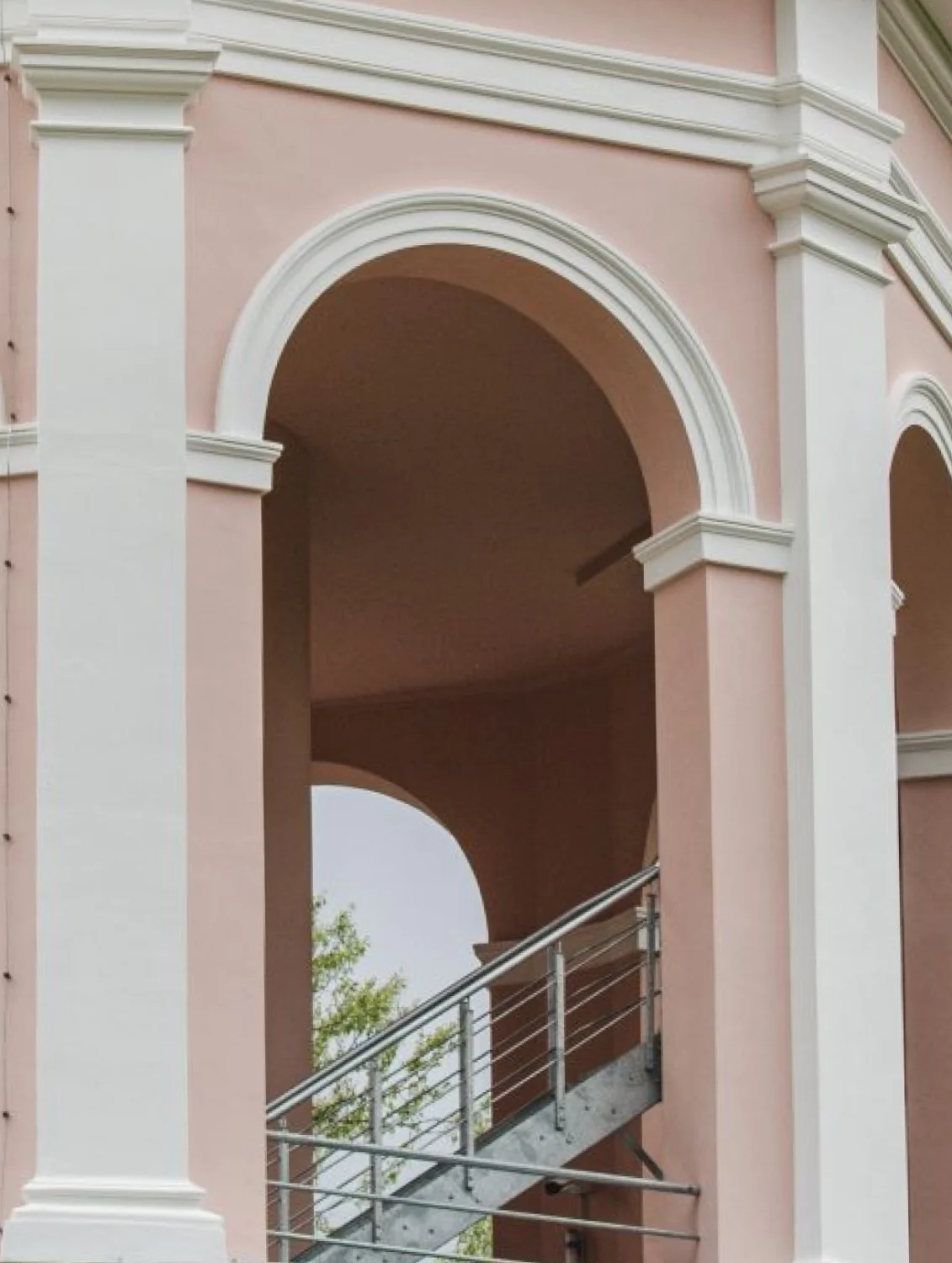
atrastalatvija.lv
Height—an Opportunity or a Burden?
The previously mentioned lean and high shape of most water towers poses multiple issues when trying to adapt them to the demands of a modern city—for example, to make them habitable, into office spaces or available to a larger public. Yet it can also be viewed as an advantage: namely when transforming them into observation towers. This solution might seem obvious, almost dull. Yet this seemingly uninspiring approach can offer multiple benefits. The space can be adapted not only purely as a viewing platform, but also that of an educational purpose: museum exhibitions, as a space for guided tours or as a venue for different events (such as European Heritage Days and others). Furthermore, by sprucing up the facades and making the interior available for visitors, the area can gain not only a new touristic landmark but also a symbol for the neighborhood.
This is the approach used during the restoration of Ķemeru water tower. Built in 1929, the tower stands at the height of 42 meters, making it the highest viewing platform in the city of Jūrmala. The tower itself is recognised as a cultural heritage site and was already used as a viewing point during the interwar period. After the second world war, the tower seized to be open for the public, and reopened its doors only in 2021 after an extensive renovation. Now the visitors are greeted with an exhibition in the towers four floors that covers the subjects of its architect, towers functionality and famous former inhabitants of Ķemeri. It is worth mentioning that the tower found in Ķemeri is the only one in Latvia that still functions as a water tower and is also open for the public. The tower is open for visitors seasonally (from May till October). To visit the viewing platform, registration is needed.
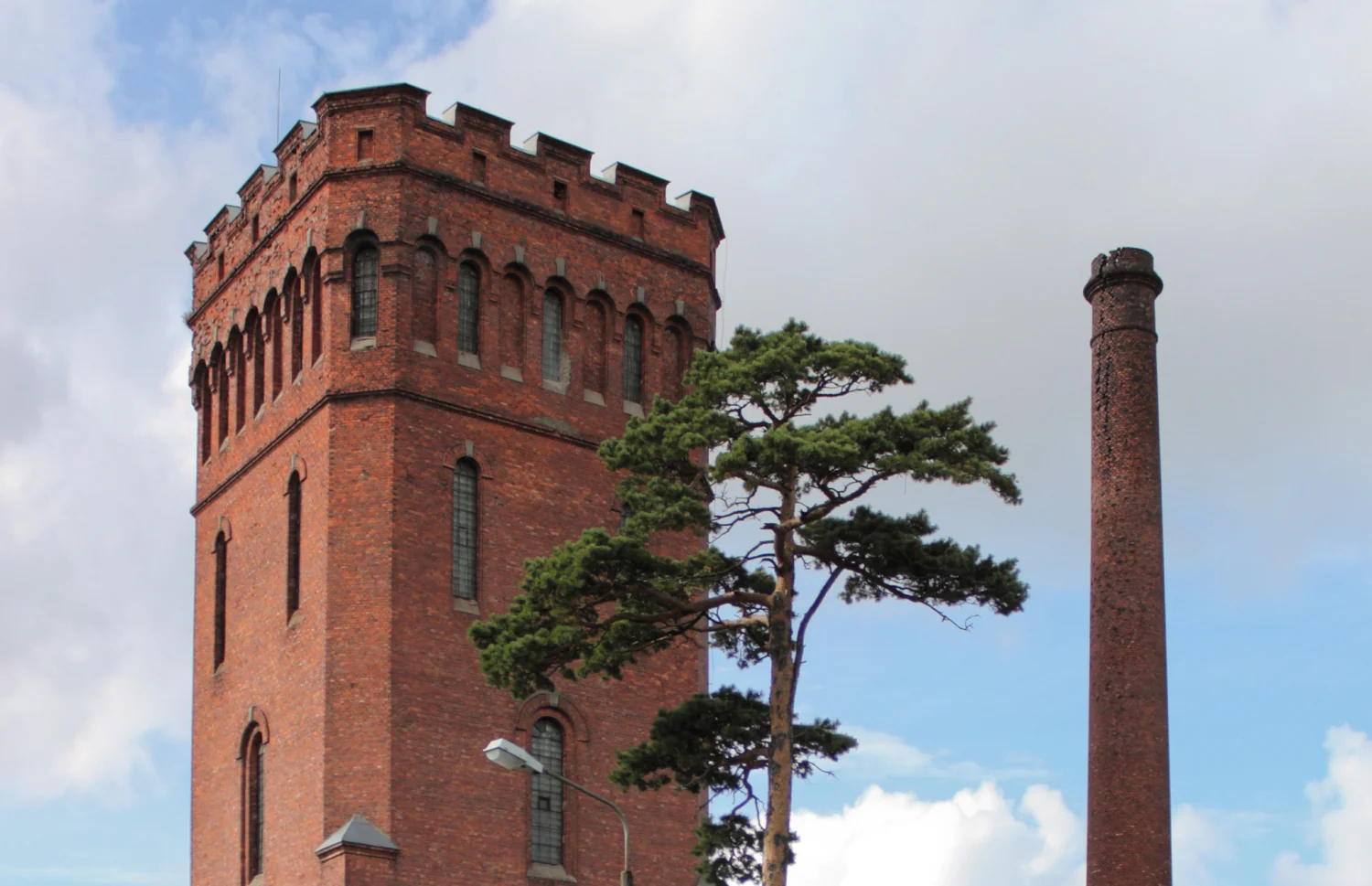
wikipedia.org
The small city of Aizpute proved that such function can be adapted for modern applications not only to flamboyant architecture of the interwar period, but also that of pure functionalism of 1960’s. Built in 1960, the water tower of Aizpute cannot boast a status of a cultural heritage site or of any original architectural features. Yet when faced with the decision what to do with the no longer functioning tower, the municipality opted not to bulldoze it but to adapt it as a viewing platform. After the renovation, the tower proved popular not only among the locals but also boasted interest of schools planning their trips in the region, increasing tourism in the often-overlooked town of Aizptute.
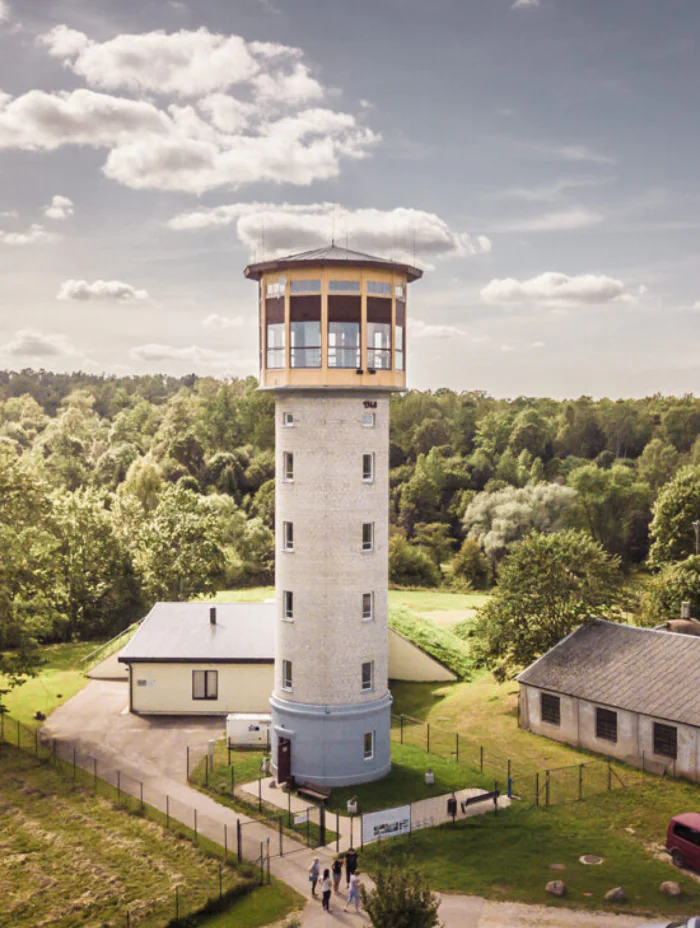
dienvidkurzeme.travel
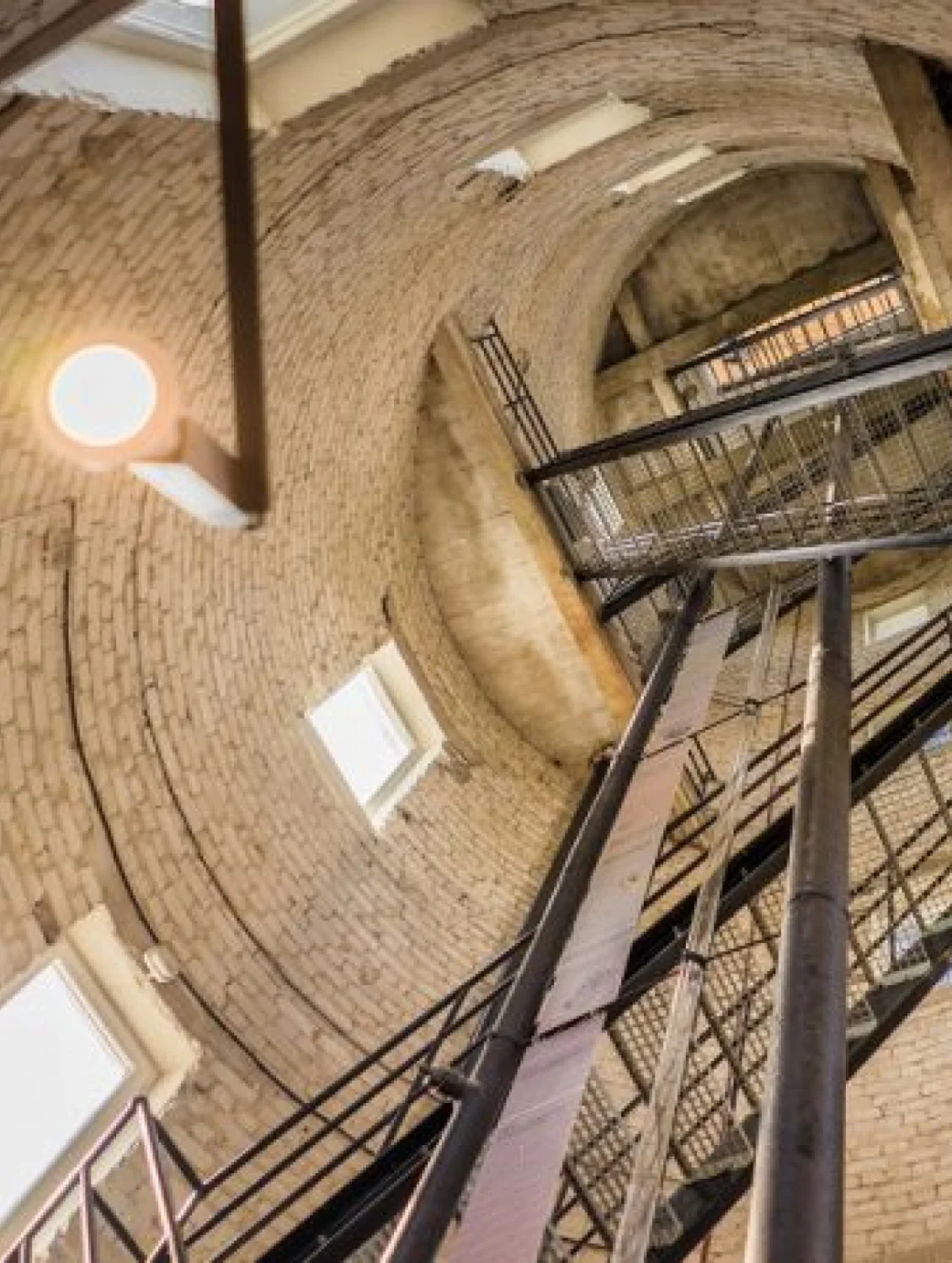
dienvidkurzeme.travel
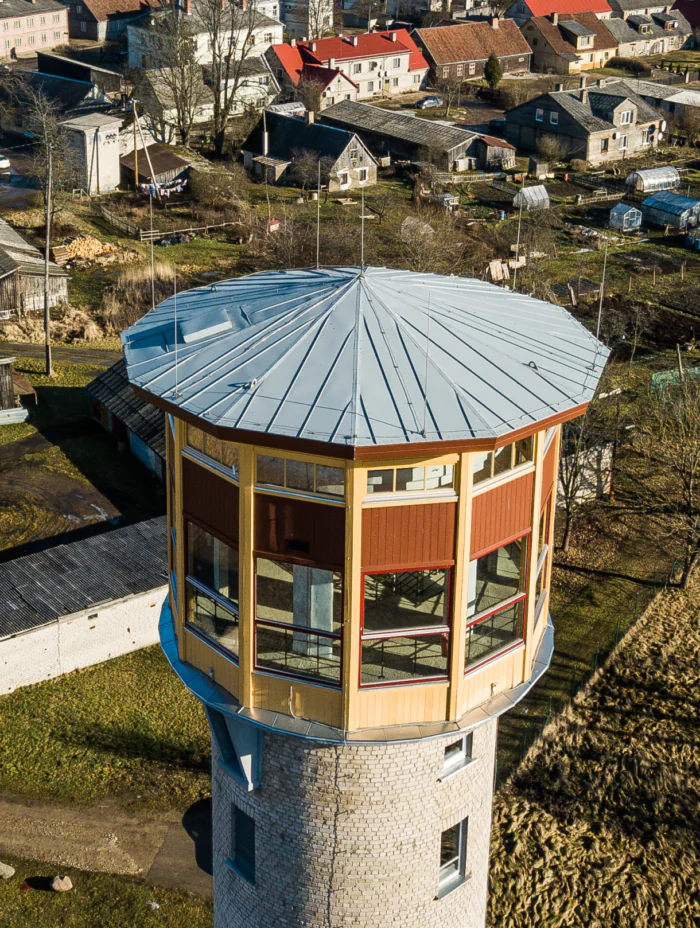
dienvidkurzeme.travel
Creativity vs Bureaucracy
Not all water towers are cylindrical structures, much of which is occupied by a spiral staircase leading to a platform at the top.. Some were built with massive bases that provide large floorspace. One of such examples is the water tower of Karosta, Liepāja. Built in 1905, the tower supplied running water for the nearby army barracks. The tower has not served this function for more that 30 years now, yet it has found another purpose. For the past four years, various artists gather to use the tower’s inner space as their summer’s creative residence, inviting locals and visitors alike to take part in making and viewing their art.
This has been possible due to successful cooperation of local NGO’s like “Karostas glāšanas biedrība” (“Karosta Ironing Company”), the owners of the tower “Liepājas ūdens” (“Liepāja Water”) and the municipality of Liepāja. Much due to the success of this project, “Liepājas ūdens” have recognised the potential the tower holds for future development as an art space—a museum, dedicated to the history of the city’s water supply. Due to the structure’s large size, quite a hefty investment is necessary, and the organisation is currently conducting a plan to make the tower available throughout the year and not only during the summer season.
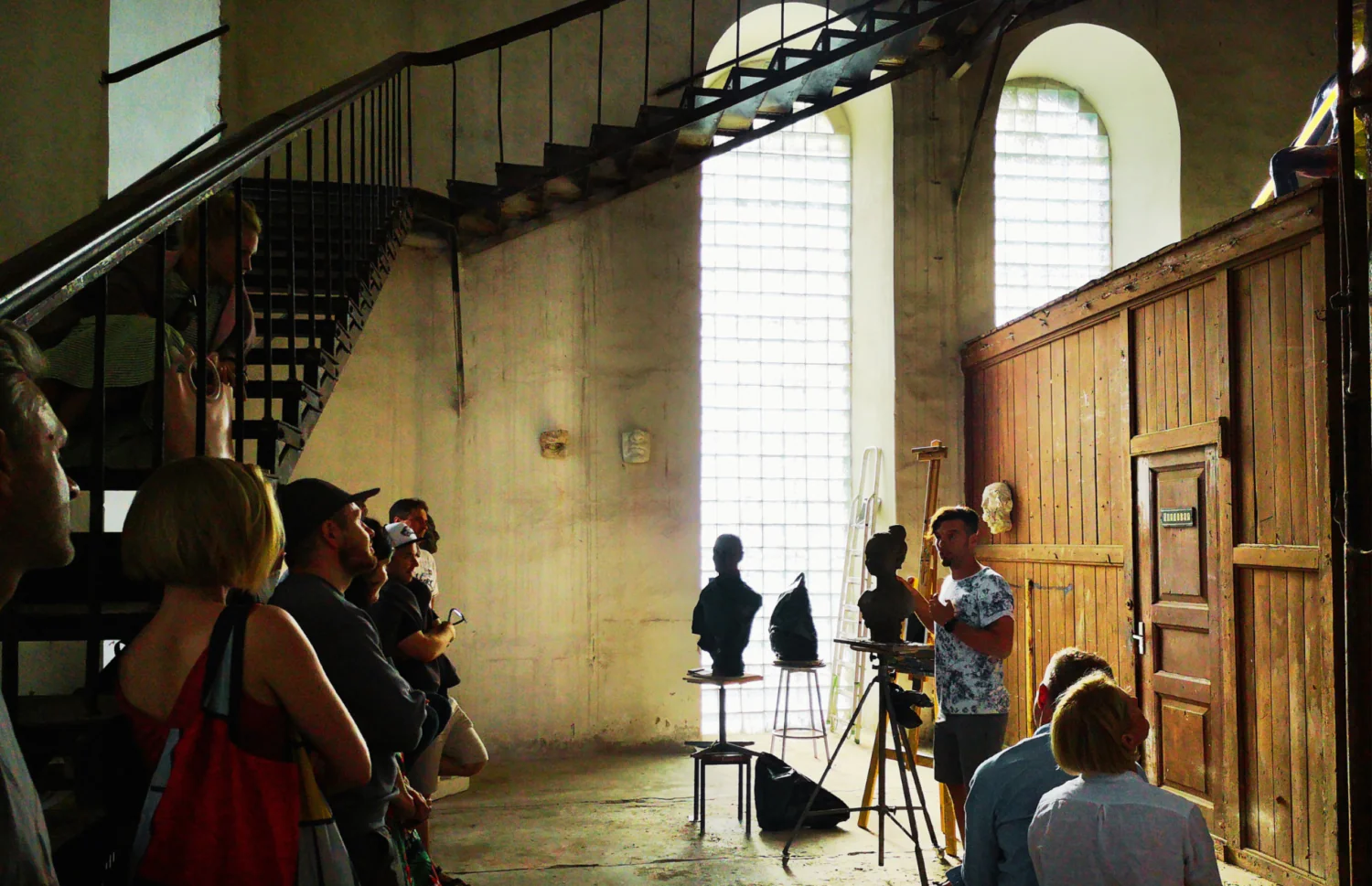
liepaja2027.lv
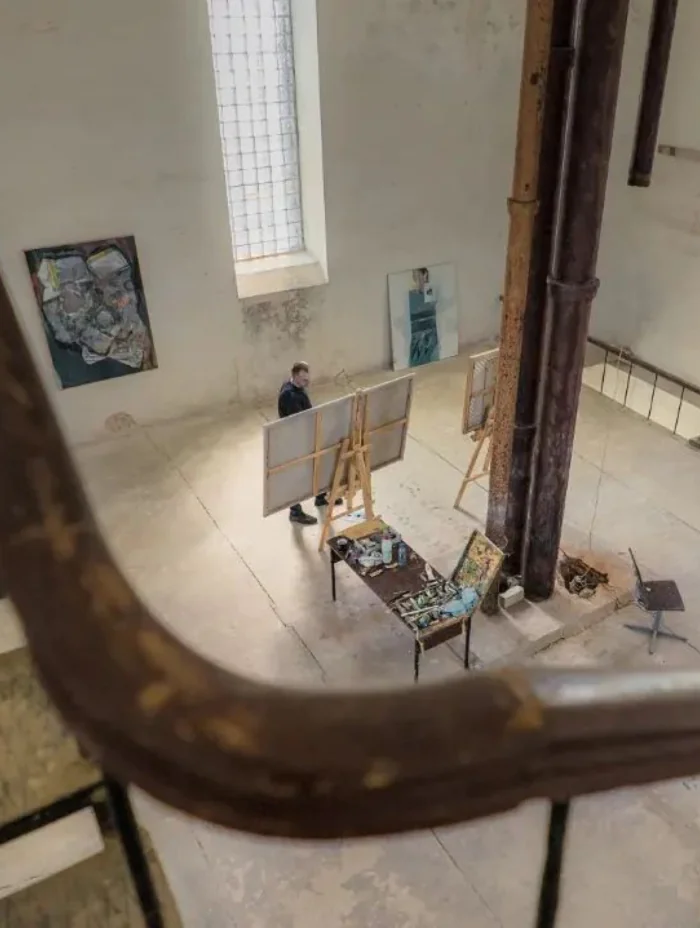
instagram.com
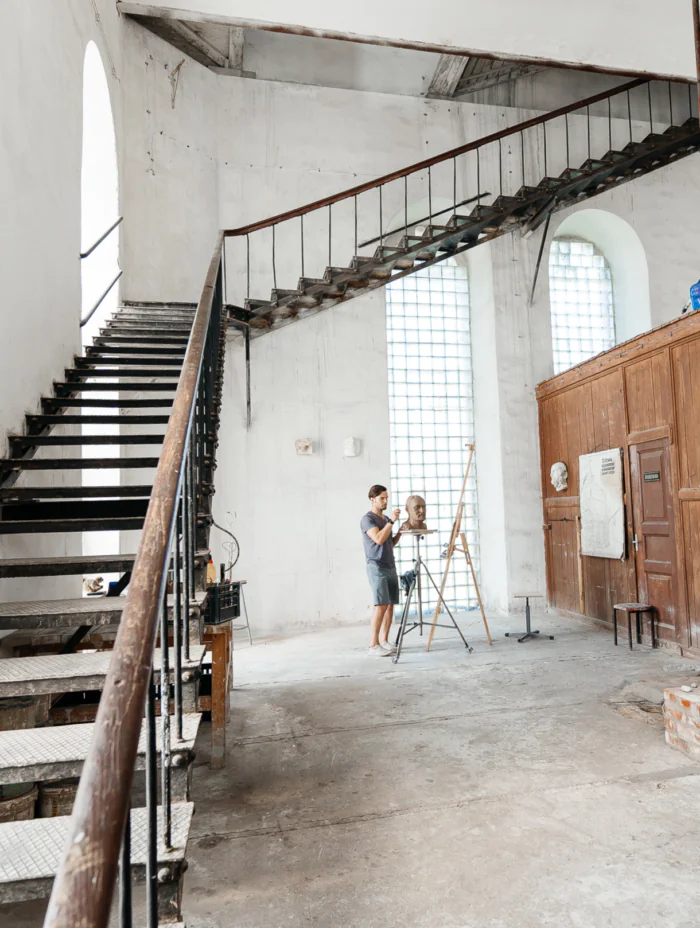
twitter.com
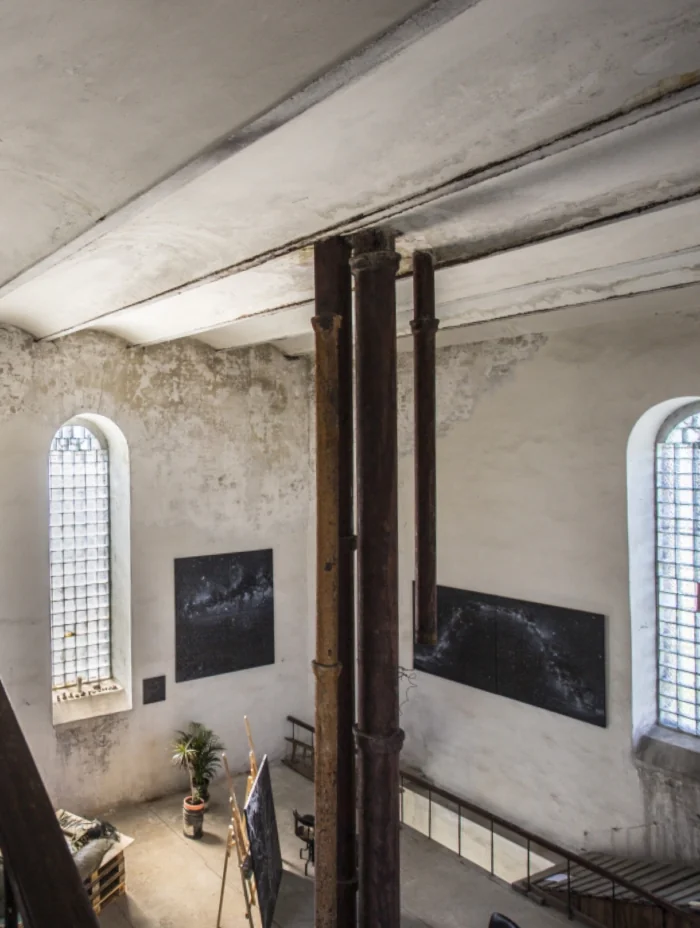
kalendars.liepaja.lv
Not everywhere has the cooperation between municipalities, NGO’s and eager renters been as successful. Wilhelm Bockslaff, also known for his project of Latvia’s Art Academy, designed the Āgenskanls Water Tower in 1911, also known as Alīses Water Tower. It has become an emblematic symbol of cities industrial past.
The tower seized its functions more than three decades ago, yet it has remained largely empty. Despite the fact that it had become home to an underground recording studio and non-governmental organisations have floated many other ideas for its reuse, the municipality of Riga has remained hesitant in pushing forward any of them.
Yet all is not in vain. When bureaucracy, finances and structural difficulties turn out to be too large to overcome, locals often find a solution. This led to the creation of “Balodis”—a cultural and concert venue that offers free music concerts to the locals and cleverly uses the water tower as its backdrop. It is yet to be seen if Riga’s new political elite will take notice of the tower, but the ever-present cultural activities around it has strengthened its stance as a symbol of Āgenskanls neighbourhood.
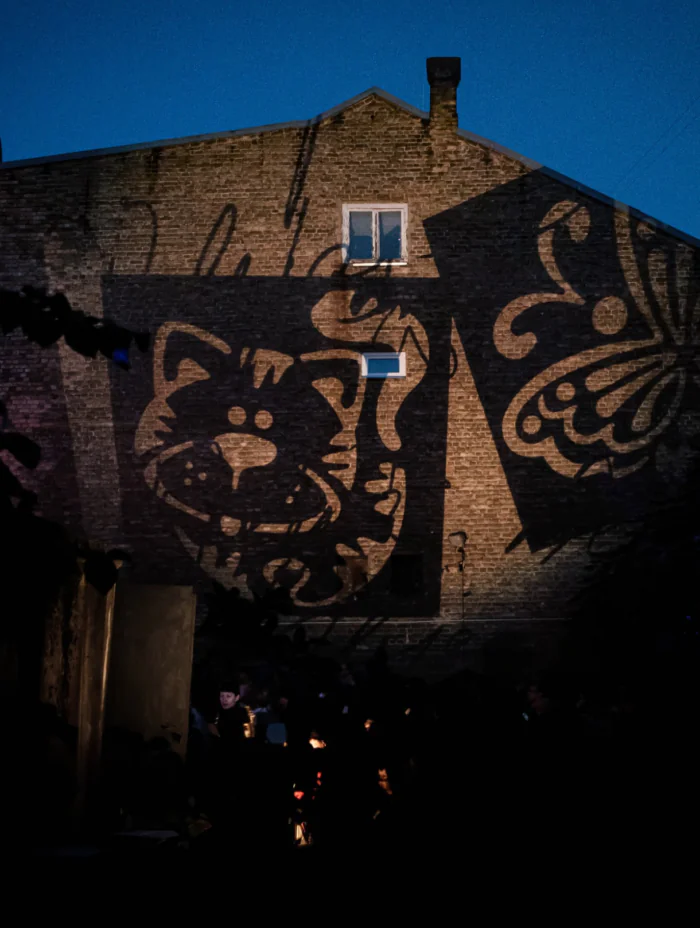
facebook.com/balodistorni
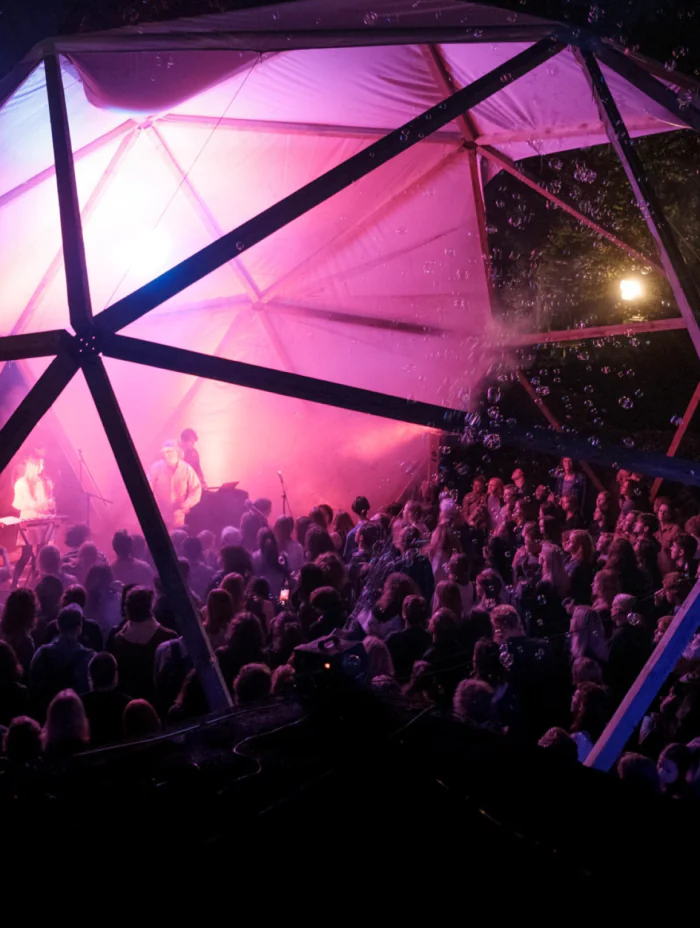
facebook.com/balodistorni
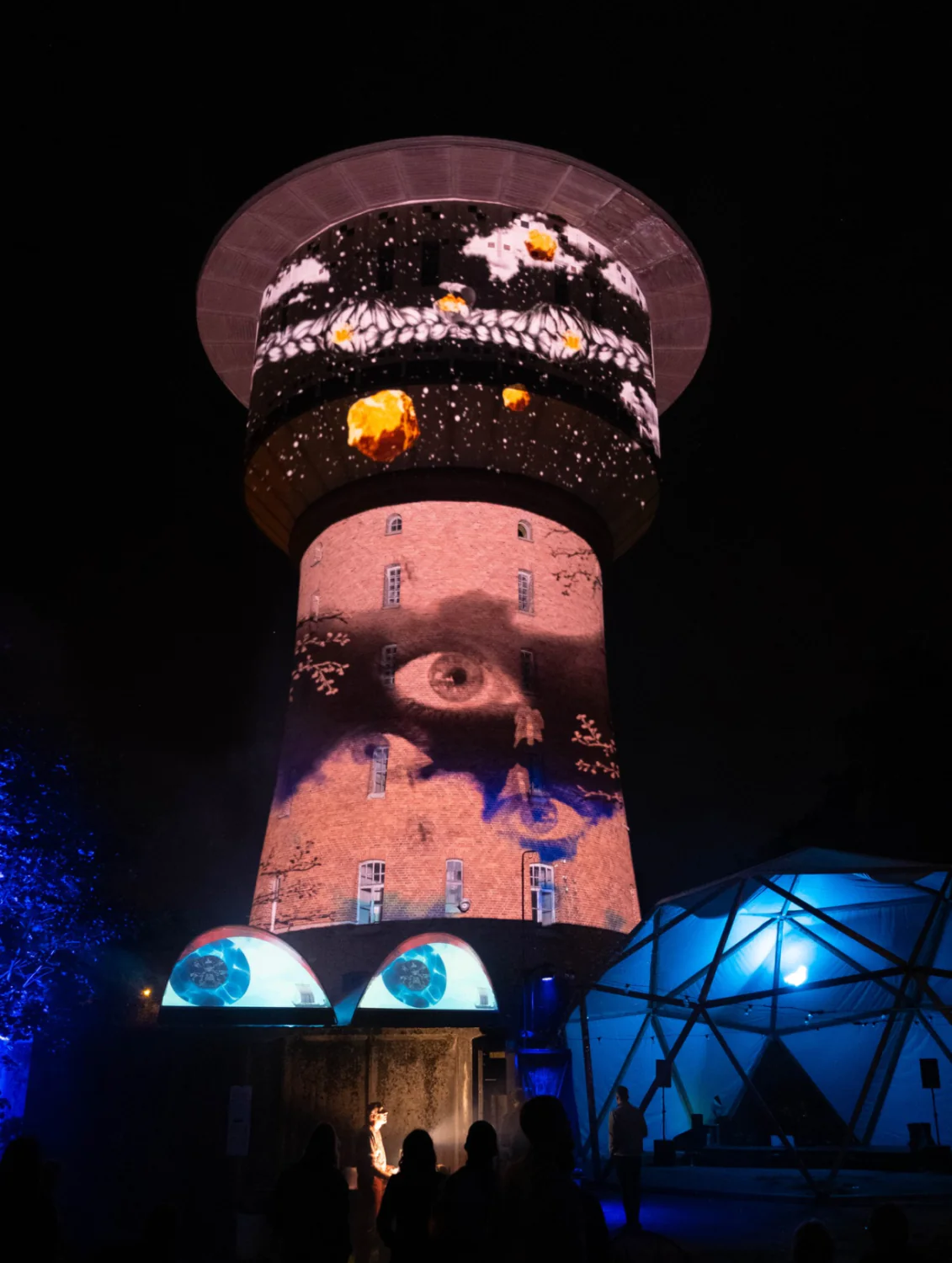
facebook.com/balodistorni
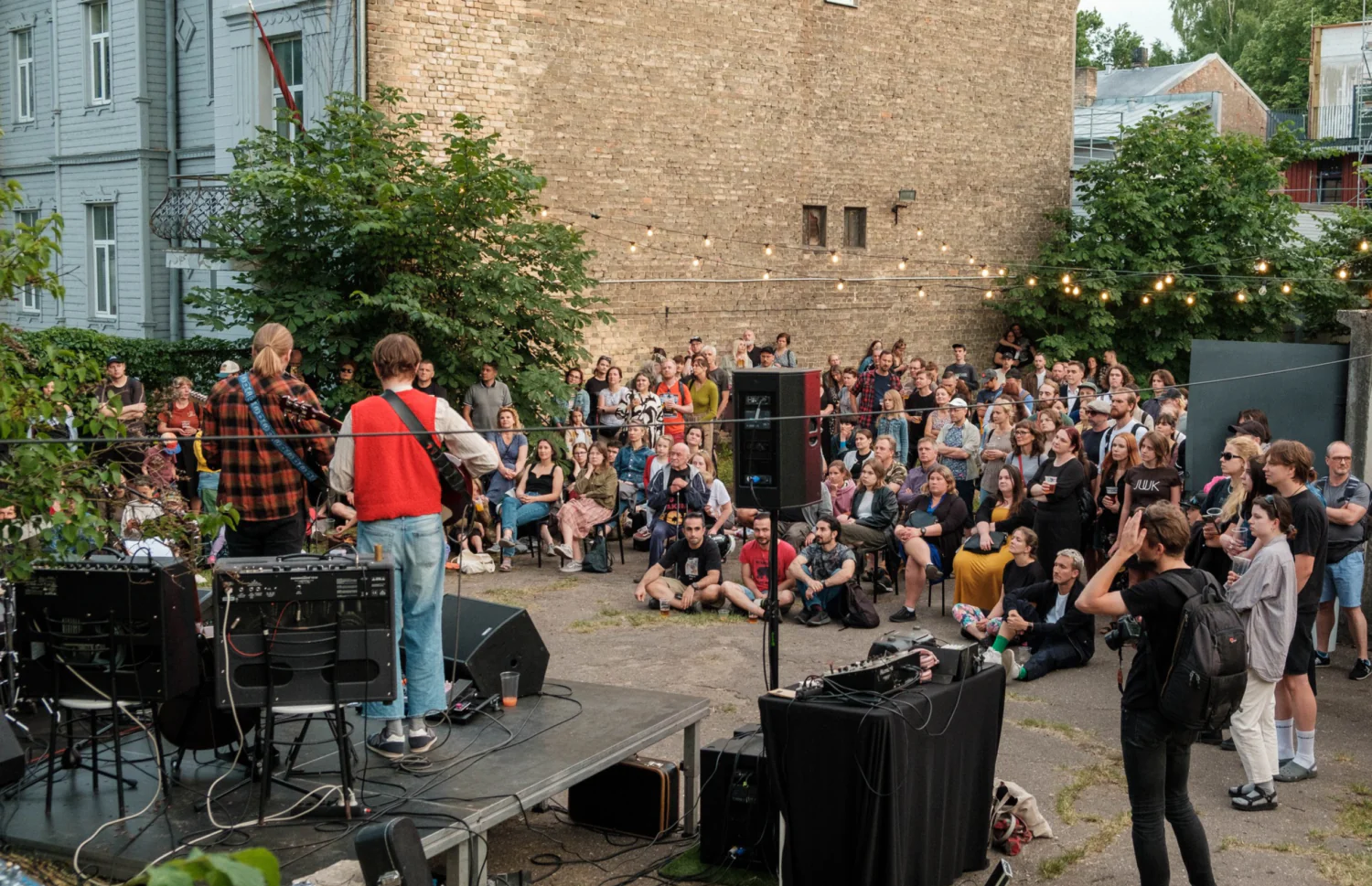
facebook.com/balodistorni
Houses in the Clouds
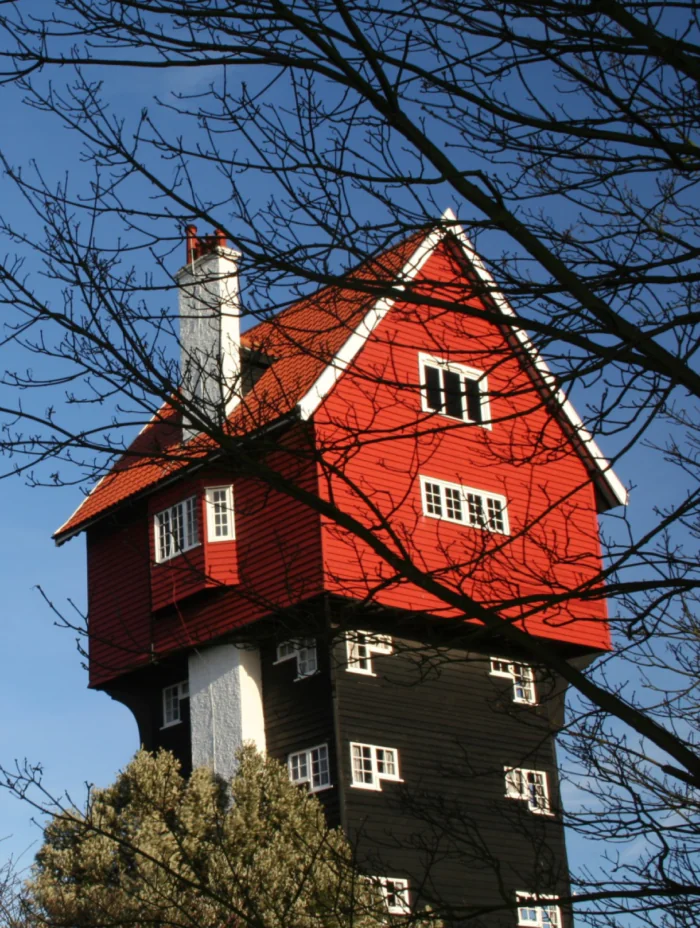
uniqhotels.com
How about living in them? Living in a fairy tale looking tower might not be as glamorous as it might sounds. Their layout might prove to be challenging for even the most enthusiastic cardio fans among us. Finding inhabited water towers can be challenging due to safety and regulatory considerations. Converting water towers into homes involves extensive structural modifications. As a result, such conversions are not as common as other adaptive reuses.
Nevertheless, there are some enthusiasts who have taken on the challenge on preserving and living in them. Just few years ago, the water tower in Čiekurkalns was a home for offices of a design studio, and in the earlier decade it hosted multiple of communal apartments. Some Latvian content creators have shared their journey on the challenges they face when restoring water towers on platforms such as TikTok and Instagram, but it is not yet known how the projects featured in the videos have been realized.
It might come as a surprise that the idea to inhabit water towers is not as contemporary as it might seem. The “House in the Clouds” is a renowned water tower converted into a residential property in Thorpeness, Suffolk, UK. Originally built in 1923, it features a striking design that resembles a house atop a water tower. In the 1970s, it was transformed into a unique home with modern amenities while preserving its original character. Located near Thorpeness Meare, it offers picturesque views of the village and the North Sea.
While some municipalities are faced with the decision to tear down these structures due to financial restraints, it is up to us as a society to offer new creative solutions. With an constant urbanisation and a growing awareness about sustainable development, water towers could, for some, offer their houses in the clouds. As for the rest of us— it is worthwhile participating in local initiatives to popularise this part of industrial heritage in order not to lose it.



